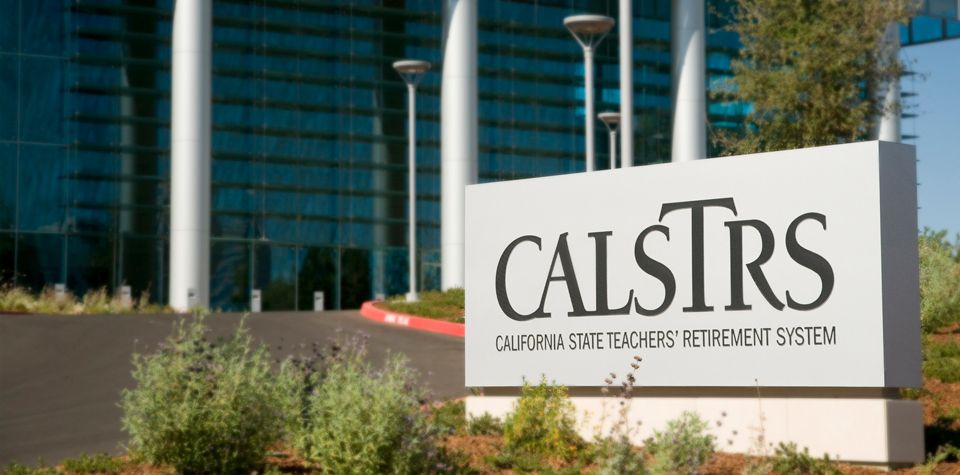LAO: Teacher pension fund too risky and complex
by Matt Fleming | February 5, 2016 5:06 am
 Policy analysts are calling on state lawmakers to simplify the way the teachers’ pension fund gets funded — to improve oversight and to avoid the state being left in a lurch.
Policy analysts are calling on state lawmakers to simplify the way the teachers’ pension fund gets funded — to improve oversight and to avoid the state being left in a lurch.
According to the non-partisan Legislative Analyst’s Office, the “subjective” funding model could leave the state with a sizable burden depending on how investments perform, adding the system is too complicated for experts to adequately monitor.
But state officials say the revised model only updates what’s been in place since the ’90s, with each stakeholder giving higher contributions.
To be clear, the LAO agrees that the new funding model — implemented in 2014 when the CalSTRS pension fund was predicted to go broke in the mid-2040s — put the fund on the right path.
However, according to a report released Tuesday[1], instead of a proportional and relatively simple funding model, contributions are recalculated every year based on an “alternate universe” funding model that could expose the state to extreme liability and may violate the spirit of “shared responsibility.”
What’s The Problem?
LAO argues that when tweaks were made to the CalSTRS pension fund in 2014, lawmakers did so with the intent that the system be proportionally funded by the state, teachers and school and community college districts depending on what they owed.
At the time, the unfunded liability (meaning the amount the fund was short if it were to pay all the benefits already earned by employees and retirees) was $74 billion — $47 billion by the districts, $20 billion by the state and $8 billion by the teachers (members of the fund). The aim was to be fully funded in approximately 30 years.
According to the LAO, it would have made sense — as was its impression — to embrace the concept of “shared responsibility,” where each of the three stakeholders pays a consistent share. But, the LAO argues that under the existing model the state’s contributions decrease when the pension’s investments perform better than the estimates, thereby deferring responsibility to the districts.
But state officials say this is the language that was out there for a while before being agreed upon and that it’s not much different than how it was before, just that everyone is paying higher contributions.
“We basically updated an existing mechanism that has been in place for quite some time,” said H.D. Palmer, deputy director for external affairs at the state’s Department of Finance. “We’re at somewhat of a loss to understand how LAO can project or conclude the losses that they have, given the fact that the law is being implemented as everyone involved in its crafting intended.”
Alternate Universe Calculation
Under this calculation, both the state and district contributions to the unfunded liability are recalculated every year based on salaries, under the assumption of what the CalSTRS situation would have been in present time had the state made different decisions in the past.
To explain further, there are two consequential decisions that it’s based on:
- In the late 1990s, the state increased pension benefits to CalSTRS’ teacher members.
- Contributions to the pension fund were decreased around 2000 because it was fully-funded for a brief period of time.
So, again, the funding model is based on what the present-day situation would have been had those two things never happened.
Ryan Miller, a principal fiscal and policy analyst at the LAO, told CalWatchdog that he was not aware of any other pensions using this kind of mechanism, although Palmer said that the CalSTRS pension is unique in that the teachers are not employees of the state (rather employees of the districts) and a unique model is warranted.
It’s Too Darn Complicated
To describe why the CalSTRS system is overly complicated, LAO used this anecdote: “In November 2014, CalSTRS’ consulting actuary introduced the details of the proposed funding policy to the CalSTRS board as follows: ‘This is probably the most difficult thing I’ve had to explain to a board in my entire career.’”
LAO argued that despite the inherent complexity of pensions in general, the “staggering complexity” of the alternate universe model makes it difficult for legislators, the governor, the CalSTRS board, teacher members and, of course, the public, to understand how it works.
“This weakens oversight of the funding plan, adds complexity to an already complex program, and will cause confusion about teacher pensions,” the LAO wrote.
Palmer agreed the model is complex, but said CalSTRS actuaries found the model to be sound, adding that required periodic reports will help with oversight.
Extra Liability
If the state’s contribution is theoretically lessened by high-performing investments, then when investments perform poorly it could have the reverse effect, leaving the state in a bind, according to the LAO.
“(I)f investment returns fall far short of assumptions over the long run, state contributions to CalSTRS could be billions of dollars higher by the 2040s,” wrote the LAO.
But Palmer noted there will be a performance report to analyze the first year, followed up by a five-year report, where lawmakers can reassess the funding model.
“It’s premature to project the kinds of fiscal impacts that are reflected in the LAO report,” said Palmer.
- released Tuesday: http://lao.ca.gov/Publications/Report/3332
Source URL: https://calwatchdog.com/2016/02/05/lao-teacher-pension-fund-risky-complex/